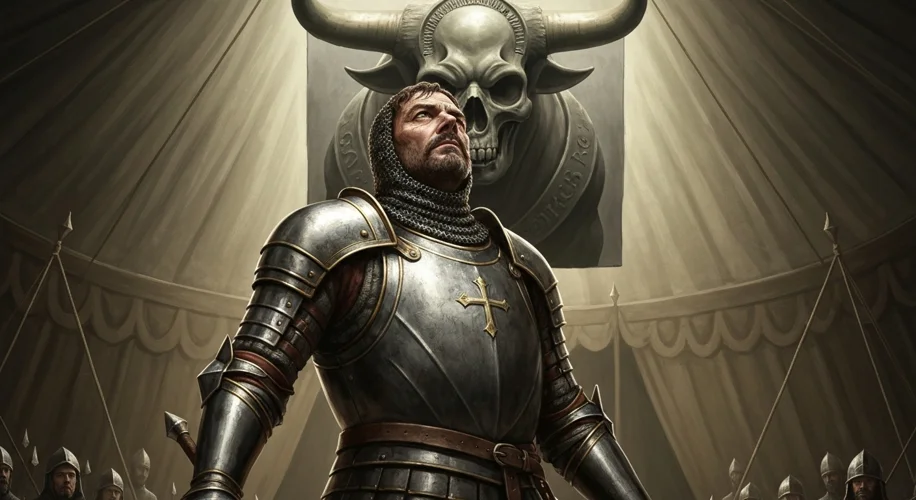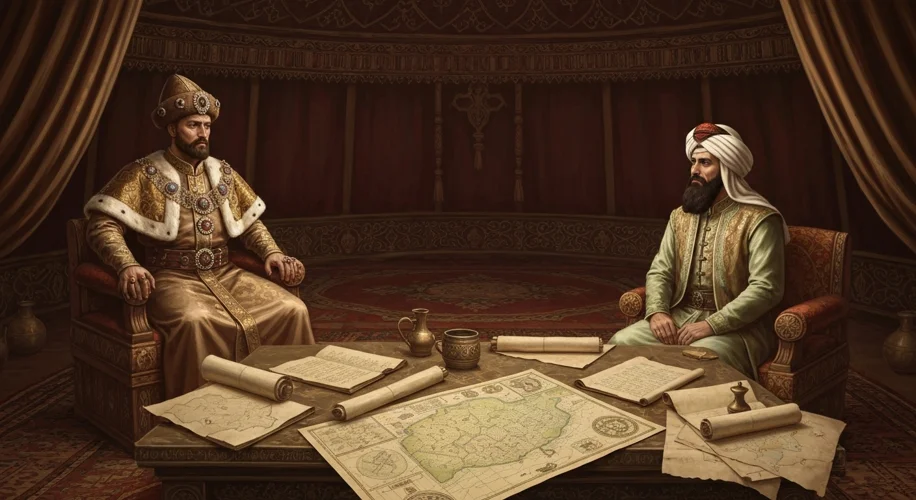The year is 1227. The air in the Holy Land crackled with a unique tension, a blend of religious fervor and palpable political intrigue. This was the backdrop for the Sixth Crusade, an endeavor led not by a zealous king or a renowned warrior, but by the Holy Roman Emperor himself, Frederick II. Yet, a dark cloud loomed over Frederick’s ambition, a shadow cast by the most potent spiritual weapon of the medieval world: excommunication.

To understand the weight of excommunication, we must first appreciate its place in the medieval mind. It wasn’t merely a religious sanction; it was a profound severance from God’s grace, a spiritual death sentence that also carried immense earthly consequences. An excommunicated individual was cut off from the sacraments, unable to participate in Mass, receive communion, or even be buried in consecrated ground. More importantly for rulers, their vassals were absolved of their oaths of fealty, opening the door to rebellion and political instability. The Pope, as God’s vicar on Earth, wielded this power as a formidable political tool, capable of dethroning kings and paralyzing kingdoms.
Frederick II, often called Stupor Mundi (Wonder of the World), was a man ahead of his time. A brilliant, multilingual ruler, he was also known for his intellectual curiosity, his patronage of the arts and sciences, and a deeply pragmatic approach to governance. This pragmatism often clashed with the Church’s temporal ambitions. His complicated relationship with the Papacy, particularly with Pope Gregory IX, had been a simmering pot for years. Gregory saw Frederick as a threat to papal authority and an ambitious overreacher, especially in his desire to reclaim Jerusalem for Christendom.
Frederick’s path to the Sixth Crusade was fraught with delay. He had promised to embark on the crusade much earlier, but illness, administrative duties, and political entanglements kept him in Europe. These postponements were met with increasing impatience and suspicion by Gregory IX. When Frederick finally set sail in August 1227, his fleet was battered by a violent storm shortly after departure, forcing a return to port. For Gregory, this was the final straw. He declared Frederick’s delays inexcusable and, on September 24, 1227, he excommunicated him.
This excommunication hung like a guillotine over Frederick’s head as he finally arrived in Acre in September 1228. He was now a spiritual pariah, leading a holy war while being deemed damned by the very Church that sanctioned it. The impact was immediate and multifaceted. For the crusader rank-and-file, many of whom were deeply pious, fighting under an excommunicated leader was a deeply unsettling prospect. It created a schism in morale, with some questioning the legitimacy and spiritual merit of their undertaking. Would God favor an army led by a man condemned by His Church?
The political dynamics were even more volatile. Frederick, despite the anathema, was a shrewd politician. He understood the power of perception and negotiation. Rather than launching a bloody military campaign, he opted for a strategy that bewildered many: diplomacy. He engaged in negotiations with al-Kamil, the Sultan of Egypt and Damascus, a man he had corresponded with previously. Frederick’s knowledge of Arabic and his shared intellectual interests with the Sultan facilitated a remarkable understanding.

What followed was astonishing. In February 1229, Frederick II achieved what legions of crusaders had failed to do through bloodshed: he negotiated the peaceful return of Jerusalem, Bethlehem, and Nazareth to Christian control. This was accomplished not through the sword, but through a treaty that granted the Christian population of Jerusalem control of the city for ten years, while also respecting the Muslim holy sites within it. Frederick, still excommunicated, entered Jerusalem and crowned himself King of Jerusalem, a symbolic act that underscored his claim but also his fraught relationship with the Church.
The consequences of Frederick’s excommunication and his subsequent diplomatic triumph were profound. While he had secured key holy sites, his methods were deeply controversial. Many in the Church and among the more militant crusader factions viewed his treaty as a betrayal, a secular solution to a spiritual problem. Pope Gregory IX continued his condemnation, even attempting to incite rebellions against Frederick in the Holy Land and in his European territories. Frederick found himself defending his actions and his legitimacy on multiple fronts.
The Sixth Crusade, led by an excommunicated emperor, became a paradox. It was a military success in terms of territorial gains, yet a spiritual and political failure in terms of papal approval and broader crusader unity. It highlighted the deep fissures within Christendom and the complex interplay between religious authority and secular power. Frederick II’s unique approach, born out of necessity and perhaps a genuine belief in diplomacy over brute force, challenged the very nature of crusading. It demonstrated that sometimes, the most potent weapon wasn’t the sword, but the carefully wielded word and the understanding between adversaries. The shadow of excommunication, intended to crush him, ultimately illuminated the complexities of power, faith, and political maneuvering in the medieval world.

